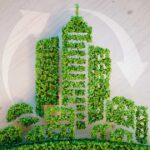Engineered Wood in Cold Climate
Due to their superb insulation properties and superior strength-to-weight ratio, engineered wood products such as glued-laminated timber (glulam) and cross-laminated timber (CLT) are gaining popularity in cold climate regions. Here are some important factors to consider when utilizing engineered wood in frigid climate regions:
Moisture Management: Engineered wood products are susceptible to moisture damage, which can be problematic in frigid climates with high snow and ice levels. To prevent moisture damage, proper detailing, and installation, including effective vapor barriers and ventilation, are essential.
Fire resistance:Typically, fire retardant chemicals are applied to engineered wood products to enhance their fire resistance. It is essential that products used in regions with frigid climates adhere to local fire codes and regulations.
Strength and durability:Engineered wood products are renowned for their strength and durability, which is crucial in frigid climates with heavy snow loads and high wind pressures. It is essential to ensure that the products utilized are designed to satisfy the specific climatic conditions of the area.
Thermal Performance: Engineered wood products have superior insulating properties, which can reduce heating and cooling costs in regions with frigid climates. To ensure that the products are implemented with high thermal efficiency, proper detailing and installation are essential.
Sustainability: Engineered wood products are frequently manufactured from sustainably harvested materials, making them an eco-friendly option for cold-climate building construction. It is essential to ensure that the products utilized are certified by reputable organizations, such as the Forest Stewardship Council (FSC) or the Sustainable Forestry Initiative (SFI).
In conclusion, engineered wood products have numerous advantages for use in regions with frigid climates, including superior insulation properties, a superior strength-to-weight ratio, and sustainability. Proper detailing, installation, and maintenance are required to ensure that the products meet local codes and regulations and function as intended.
In cold climates, engineered timber products can be a durable, cost-effective, and eco-friendly option for building construction if they are properly maintained.
Disclaimer: This content is provided solely for your review. Erusu Consultants takes no liability for this article. The reader is advised to form their own opinion. Please consult a structural engineer before making any final decisions.






